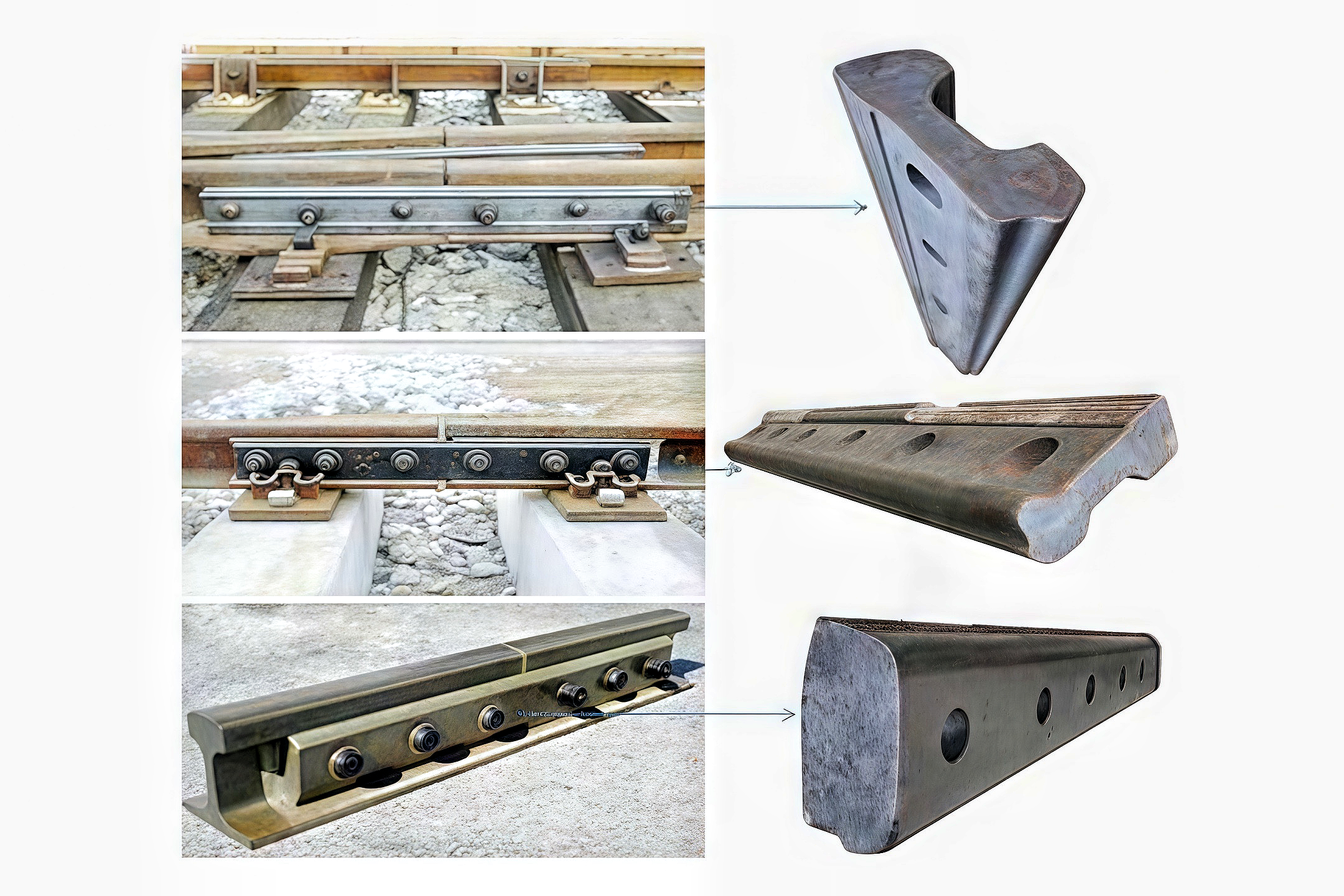The Contribution of Rail Fasteners to Sustainable Transportation: A Deep Dive into Efficiency and Eco-Friendliness
May 16,2025
The Contribution of Rail Fasteners to Sustainable Transportation Table of Contents 1. Introduction to Rail Fasteners 2. The Role of Rail Fasteners in Rail Systems 3. Types of Rail Fasteners: A Comprehensive Overview 4. Sustainability in Transportation: An Overview 5. Environmental Impact of Rail Fasteners 6. Economic Benefits of Using Rail Fasteners 7. Technological Advancements in

The Contribution of Rail Fasteners to Sustainable Transportation
Table of Contents
- 1. Introduction to Rail Fasteners
- 2. The Role of Rail Fasteners in Rail Systems
- 3. Types of Rail Fasteners: A Comprehensive Overview
- 4. Sustainability in Transportation: An Overview
- 5. Environmental Impact of Rail Fasteners
- 6. Economic Benefits of Using Rail Fasteners
- 7. Technological Advancements in Rail Fasteners
- 8. Case Studies: Success Stories in Sustainable Rail Transportation
- 9. Future Trends in Rail Fasteners and Sustainability
- 10. Frequently Asked Questions
- 11. Conclusion
1. Introduction to Rail Fasteners
Rail fasteners are integral components of rail infrastructure, ensuring the stability and reliability of railway systems worldwide. These devices secure rails to sleeper supports, providing essential support during transit. As the transportation sector strives for sustainability, the role of rail fasteners has become increasingly significant. By enhancing the durability and efficiency of rail systems, rail fasteners contribute substantially to a greener transportation model.
2. The Role of Rail Fasteners in Rail Systems
Rail fasteners play a crucial role in the overall performance of rail systems. They maintain the alignment and position of the rails, which is vital for safe and smooth train operations. When trains pass over the tracks, rail fasteners absorb and distribute the forces exerted by the train's weight and momentum, reducing wear and tear on the infrastructure. This aspect is particularly important for high-speed rail systems, where precision and stability are paramount.
2.1 Enhancing Track Stability
The primary function of rail fasteners is to ensure that tracks remain stable under various conditions. By securing the rail to the sleeper, fasteners help in minimizing lateral and vertical movements. This stability is essential for preventing rail buckling, which can lead to significant safety hazards and operational delays.
2.2 Vibration Damping
Rail fasteners also play a vital role in damping vibrations generated by moving trains. Excessive vibrations can lead to track degradation over time, necessitating costly repairs and maintenance. By absorbing these vibrations, rail fasteners enhance the lifespan of the rail infrastructure while also contributing to a more comfortable ride for passengers.
3. Types of Rail Fasteners: A Comprehensive Overview
There are several types of rail fasteners, each designed for specific applications and environments. Understanding these types is crucial for selecting the right fasteners for sustainable transportation.
3.1 Bolted Fasteners
Bolted fasteners are widely used due to their strength and reliability. They consist of bolts and nuts that secure the rail to the sleeper. While they provide excellent stability, they require regular maintenance to ensure their effectiveness.
3.2 Clip Fasteners
Clip fasteners are designed to securely hold the rail in place without the need for bolts. These fasteners are prevalent in modern rail systems because they are easier to install and maintain. They also provide the flexibility needed for rail expansion during temperature fluctuations.
3.3 Spring Fasteners
Spring fasteners utilize elastic materials to hold the rail securely while allowing for some movement. This design helps to absorb vibrations and reduce noise, making them ideal for urban rail systems where noise pollution is a concern.
3.4 Composite Fasteners
Emerging technologies have led to the development of composite fasteners that combine various materials to achieve enhanced performance. These fasteners can offer improved durability and reduced weight, contributing to sustainability efforts.
4. Sustainability in Transportation: An Overview
Sustainable transportation refers to systems that meet current mobility needs without compromising the ability of future generations to meet their own. This concept is increasingly relevant as urbanization and population growth place higher demands on transportation networks.
4.1 The Importance of Sustainable Rail Systems
Rail systems are inherently more sustainable than road or air transport due to their lower greenhouse gas emissions per passenger kilometer. Investing in rail infrastructure, particularly through innovative components like rail fasteners, can significantly reduce the environmental impact of transportation.
4.2 Integrating Sustainability into Design
The design and manufacturing of rail fasteners must prioritize sustainability. This includes using recyclable materials, implementing energy-efficient production processes, and creating designs that minimize waste and enhance durability.
5. Environmental Impact of Rail Fasteners
The environmental impact of rail fasteners extends beyond their initial use. Understanding this impact is essential for fostering a more sustainable transportation system.
5.1 Lifecycle Assessment of Rail Fasteners
A lifecycle assessment evaluates the environmental effects of rail fasteners from production through disposal. By examining energy consumption, emissions, and waste, manufacturers can identify opportunities for improvement and develop more sustainable products.
5.2 Reduction of Resource Consumption
By enhancing the durability and lifespan of rail infrastructure, high-quality rail fasteners reduce the need for frequent replacements and repairs. This reduction in resource consumption is a crucial aspect of sustainable transportation.
6. Economic Benefits of Using Rail Fasteners
Investing in efficient rail fasteners can yield significant economic benefits for transportation authorities and the broader economy.
6.1 Cost Savings through Enhanced Durability
High-quality rail fasteners can lead to substantial cost savings over time. Their durability reduces maintenance frequency and extends the lifespan of rail systems, allowing for more efficient use of public funds.
6.2 Job Creation in Sustainable Manufacturing
The growing demand for sustainable rail fasteners can stimulate job creation in manufacturing and engineering sectors. As companies shift towards environmentally friendly practices, new opportunities arise for skilled labor in these fields.
7. Technological Advancements in Rail Fasteners
Technological advancements are continually shaping the rail fastener industry. Innovations are focused on enhancing performance, sustainability, and safety.
7.1 Smart Fastening Systems
Emerging smart fastening technologies incorporate sensors and monitoring systems to provide real-time data on the condition of rail infrastructure. These systems enable proactive maintenance, reducing downtime and improving safety.
7.2 Use of Advanced Materials
Innovations in materials science have led to the development of high-strength, lightweight materials for rail fasteners. These advancements enhance performance while reducing the overall environmental impact of production.
8. Case Studies: Success Stories in Sustainable Rail Transportation
Examining successful implementations of rail fasteners can provide valuable insights into their contributions to sustainable transportation.
8.1 High-Speed Rail in Europe
European countries have pioneered high-speed rail systems that utilize advanced rail fasteners to maintain track stability and safety. These systems have significantly reduced travel times while lowering carbon emissions.
8.2 Urban Rail Systems in Asia
Asian urban rail systems have integrated innovative rail fasteners to enhance comfort and reduce noise pollution. These efforts contribute to better public transportation options, encouraging more people to choose rail over cars.
9. Future Trends in Rail Fasteners and Sustainability
As the transportation sector evolves, rail fasteners will continue to play a vital role in achieving sustainability goals.
9.1 Emphasis on Circular Economy
The future of rail fasteners lies in embracing a circular economy, where materials are reused and recycled. Manufacturers are increasingly focusing on developing fasteners that can be repurposed at the end of their lifecycle.
9.2 Integration with Renewable Energy Sources
Future rail systems may integrate renewable energy technologies, such as solar panels, into rail fasteners. This innovation will further enhance the sustainability of rail transportation.
10. Frequently Asked Questions
10.1 What are rail fasteners and why are they important?
Rail fasteners are devices that secure rails to sleepers, ensuring stability and safety in rail systems. They are crucial for maintaining track alignment and absorbing vibrations.
10.2 How do rail fasteners contribute to sustainability?
By enhancing the durability and efficiency of rail systems, rail fasteners reduce the need for repairs and replacements, minimizing resource consumption and environmental impact.
10.3 What types of rail fasteners are available?
There are several types of rail fasteners, including bolted, clip, spring, and composite fasteners, each designed for specific applications and environments.
10.4 How do rail fasteners affect transportation costs?
High-quality rail fasteners can lead to significant cost savings through reduced maintenance needs and extended infrastructure lifespan, making transportation more economically viable.
10.5 What future trends can we expect in rail fastener technology?
Future trends include a focus on circular economy practices, the integration of smart technologies, and the use of renewable energy sources in rail systems.
11. Conclusion
The contribution of rail fasteners to sustainable transportation cannot be overstated. These essential components enhance the efficiency, durability, and safety of rail systems while significantly reducing their environmental impact. As the transportation sector continues to evolve, investing in innovative rail fasteners will be crucial for achieving a sustainable future. By prioritizing durability, adopting advanced technologies, and embracing sustainable manufacturing practices, we can build a robust rail infrastructure that meets the needs of today and tomorrow.
Recommended
There is one sheet production line and two high-precision engraving machines, with an annual production capacity of 6 million railway special height adjustment pads.
Electrostatic spraying workshop
There is one electrostatic spray equipment production line and one spray paint production line, with an annual production capacity of 10,000 tons.
Contact Us


